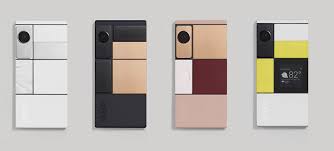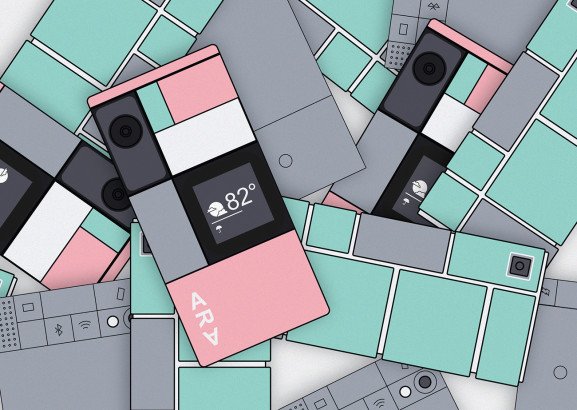Rise and fall of world's most revolutionary phone

It looked nothing like an iPhone, or anything Apple might dare to make.
On September 10, 2013, the day Apple unveiled the iPhone 5S, Dutch designer Dave Hakkens uploaded a video to YouTube to promote his college graduation project: Phonebloks, “a phone worth keeping.”
Hakkens imagined a smartphone made of interchangeable blocks, and each block — the screen, the battery, the processor, and so on — could be easily upgraded or repaired, so it wouldn’t end up in a landfill after two years.
“In the beginning, we were asking for like 500 supporters,” said Hakkens, but 48 hours later, the video went viral, racking up millions of views — and delivering a jolt to a small technology incubator called ATAP, Motorola’s Advanced Technology and Projects group.
“Phonebloks was announced, and the world went berserk. If Dave Hakkens hadn’t had this viral video, we wouldn’t have announced Ara probably for at least another year,” said former ATAP design lead Dan Makoski in a VentureBeat interview. “We were outed by Dave, inadvertently.”
The ATAP studio had worked in secret for more than a year on a similar device: a phone made of infinitely customizable parts they called modules. It wasn’t supposed to be a phone you’d queue up in line every year to buy. It was something radically different. Block by block, this was to be a phone you could create.
“Ara Knaian of NK Labs, who the project’s named after, he and his crew had figured out how to actually make it work,” recalls Makoski. The team had already finalized the initial industrial designs for it. “If we [waited] to tell the world that we’ve been working on this, everybody’s going to think that we copied Dave. So we said, ‘Shit, OK, what should we do?'”
“So,” Makoski said, “we just called Dave.”
48 days later, Motorola revealed it: Project Ara.
HARRISON WEBER@HARRISONWEBER JANUARY 10, 2017 11:05 AM
Above: The many forms of Ara.
Image Credit: Illustration by Harrison Weber for VentureBeat
VB Recommendations
Nintendo Switch’s 2018 lineup looks just like 2007, 2011, and 2014
Unbabel raises $23 million from Microsoft, Salesforce, others to grow its machine-human translation platform
Speed up your iPhone battery replacement in 3 steps
Upcoming Events
BLUEPRINT Mar 5 - 7
GamesBeat Summit 2018 Apr 9 - 10
Transform 2018 Jun 25 - 26
VB Summit 2018 Oct 23 - 24
It looked nothing like an iPhone, or anything Apple might dare to make.
On September 10, 2013, the day Apple unveiled the iPhone 5S, Dutch designer Dave Hakkens uploaded a video to YouTube to promote his college graduation project: Phonebloks, “a phone worth keeping.”
Hakkens imagined a smartphone made of interchangeable blocks, and each block — the screen, the battery, the processor, and so on — could be easily upgraded or repaired, so it wouldn’t end up in a landfill after two years.
“In the beginning, we were asking for like 500 supporters,” said Hakkens, but 48 hours later, the video went viral, racking up millions of views — and delivering a jolt to a small technology incubator called ATAP, Motorola’s Advanced Technology and Projects group.
“Phonebloks was announced, and the world went berserk. If Dave Hakkens hadn’t had this viral video, we wouldn’t have announced Ara probably for at least another year,” said former ATAP design lead Dan Makoski in a VentureBeat interview. “We were outed by Dave, inadvertently.”
The ATAP studio had worked in secret for more than a year on a similar device: a phone made of infinitely customizable parts they called modules. It wasn’t supposed to be a phone you’d queue up in line every year to buy. It was something radically different. Block by block, this was to be a phone you could create.
“Ara Knaian of NK Labs, who the project’s named after, he and his crew had figured out how to actually make it work,” recalls Makoski. The team had already finalized the initial industrial designs for it. “If we [waited] to tell the world that we’ve been working on this, everybody’s going to think that we copied Dave. So we said, ‘Shit, OK, what should we do?'”
“So,” Makoski said, “we just called Dave.”
48 days later, Motorola revealed it: Project Ara.
1
“Thinking back, I never called it a modular phone,” said Hakkens in an interview with VentureBeat.
“I had an old camera that I broke and I couldn’t really fix it. So I took it apart and I noticed all the components were still pretty good, except for one thing.”
“I thought: Isn’t that weird that we throw everything away just because one part is broken?” said Hakkens.
“At first, I wanted to make a phone that lasts 100 years. But then I realized, I kind of like technology — that it evolves, that it gets better. The only downside is that after it gets better, we throw everything away. I started looking into it, and it generates a lot of e-waste … I mean now we have some devices, but in the future it’s thermostats, fridges, microwaves — everything will be connected. So what if a chip breaks in your fridge? Do you just throw the entire thing away?”
The Phonebloks story spread like wildfire. Gadget blogs covered it en masse, hordes of supporters signed up to support, tweet, and share the idea with a viral marketing tool called Thunderclap, and developers fired back, saying it couldn’t be done — that it was impossible to build. Perhaps they had a point.